Every driver must be knowledgeable about the parts of their vehicle as well as the cost associated with them, and thermal duct tape is a great way to maintain any vehicle. One of those is the rear wheel bearing, which is a part that guarantees a good spin of the wheels and the functioning of the vehicle.it would be beneficial if you had the right ideas regarding what the process of replacement entails. This article is designed to give a detailed account of what the replacement of a rear wheel bearing costs, basic indicators for the rear wheel bearing replacement, and procedures that could possibly change the cost that you will incur. This guide also assists in either repairing the residual damage or planning for damages that may come in the future. You ought to have clarity on the replacements and the processes that accompany it.
How much does it cost to replace a rear wheel bearing?
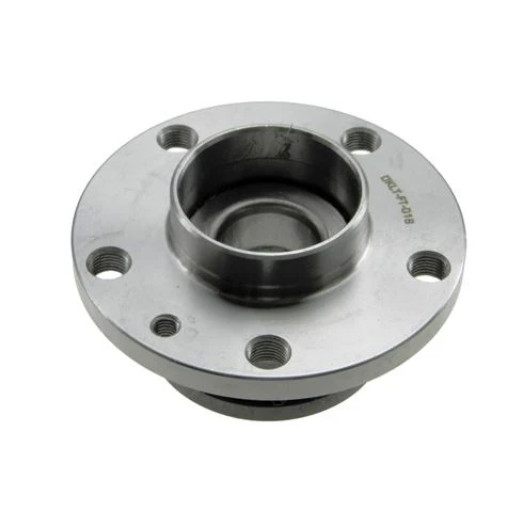
Rear wheel bearing replacement is one of the essential tasks which requires your attention. Interestingly, this task can be undertaken in a reasonable price range between $150 and $500. Such a price range should largely be able to cover the labor wages, the make and model of the vehicle, and the quality of the spare part used. Generally speaking, spare parts could cost anywhere from $50-200, and labor could charge anything from $100-$300. Those who own luxury or specialty vehicles may suffer higher costs due to expensive parts and complicated procedures.
Average cost of rear wheel bearing replacement
however, replacing a rear wheel bearing usually seems to be a straightforward job that isn’t particularly complicated. That being said, it is worth noting that particular pricing will depend upon the brand of the vehicle, maintenance fees, and the quality of parts that have to be employed. On average, you are looking at none the higher than 500 dollars, but do adjust your scope with some of the more expensive brands as they are complex. Supporting the cost of a repair shop is also not easy as the majority of ‘the part’ would range from around 50 to 200, and repair costs are valued between 100 and 300. An owner of a high-performance and luxury vehicle is likely to see the restoration fees being charged at a higher value due to the special requirements and added attention to detail.
Factors affecting the cost of wheel bearing replacement
When considering how much you are likely to pay for a wheel bearing replacement, there are many aspects that may determine the overall total. Having been in the industry, here is a breakdown of the main parameters to have in mind:
- Type of Vehicle: There is a range when estimating costs of sourcing and installing car parts, owing to the type and model of the vehicle. For regular car models, the cost it takes to put them together is cheaper, plus standard manufacturers make cheaper parts. However, there are some expensive alternatives, such as performance cars, that have higher costs due to the installation of specialized bearings that are done precisely.
- Quality of Parts: Regarding quality, there are wheel bearings manufactured for the economy and premium ranges. Even though they may cost a little extra to purchase, they are worth it due the fact that they come with better warranties and can last a long period, thus decreasing the chances of replacement a fair amount.
- Labor Costs: Depending on your proximity to certain places as well as the shop that you visit, labor rates can hugely differ. Brand dealerships, as well as urban area mechanics, charge more in labor for their services and time as a result of hourly rates, which will be more expensive compared to independent stores with lower rates.
- Condition of the Surrounding Components: In the case that the problems with the wheel bearing were accompanied by issues caused or addressed with the hub assembly or axle parts, quite a few additional repairs would need to be made,e thus increasing the. It is always wise to fix related issues as well when replacing the part.
- Accessibility and Complexity: Depending on how the bearing is made when designing the car’s suspension system, some are easier to install than others. For some makes and models of cars, the wheel bearing installation can be a straightforward process, while for other makes, it may take a major disassembly process, resulting in over labor.
Knowing these elements assists in budgeting for the replacement and increases your confidence in discussing estimates or repair options with your mechanic. Always request a conspectus on how parts and labor will be broken down.
Labor costs vs. parts costs for rear bearing replacement
Labor is almost always more expensive than bearing parts during rear bearing replacement, which explains the price disparity. It is interesting to note that the rear bearing parts price, such as the hub assembly or bearing, generally falls between 50-200 USD while the cost of labor per assembly ranges between 150 USD and 400 USD, which is dependent on how long the assembly takes and where the work is done. The reason behind this is that the reinstallation of rear bearings requires a lot of the expert’s time since most of the suspension, difference, or axle have to be taken apart.
What are the signs that I need to replace my rear wheel bearing?
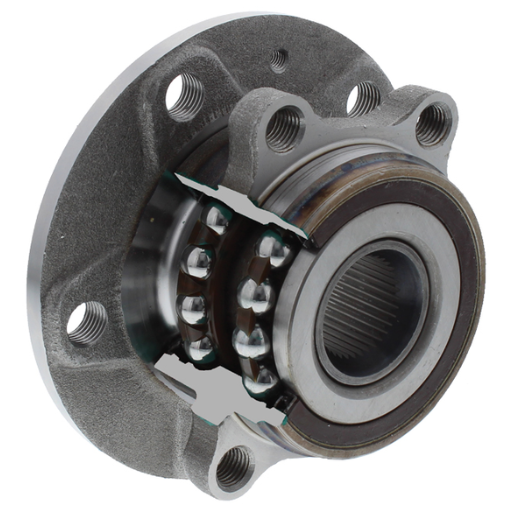
some indicators suggest that you must get your rear wheel bearing replaced. One such thing is a humming, grinding, or roaring sound that seems to come from the rear wheels while moving; this gets pronounced as one accelerates. Steering wheel vibration or abnormal wear on the tires would also be observed. Another marker would be a loss of stability of the vehicle or a wobbling feeling while driving. All of these should not be ignored as they indicate the potential of causing damage to the vehicle and risks whilst driving.
Symptoms of a failing wheel bearing
If you happen to hear humming, grinding, or roaring sounds coming from your vehicle, especially when you accelerate, that might indicate a failed wheel bearing. Apart from that, there are other noticeable signs, such as car stability issues, vibration in the steering wheel, and uneven wear of the tires. In such cases, it is best to have the car checked for damage that could lead to risk during your driving session, aye?
How to inspect wheel bearings for wear
One’s worn wheel bearings ought to be inspected regularly and in my professional playing field i recommend following a proper sequence. Firstly, raise the vehicle using a lift and set it on jack stands. Next, hold the tire at 12 and 6 o’clock positions and try to rock the tire back and forth. An excessive movement or play of more than 0.5mm while rocking the wheel indicates a worn-out wheel bearing. Now spin the wheel by hand and check if you can hear some rough grinding noises or some other similar sounds — these are not good signs. Hopefully, you have also checked if there is any grease oozing out of the pores or signs of cracks around the bearing housing addition. Bearing torque settings are such that, if the bearing is not seated correctly a torque wrench can yield a high torque which will cause wear and tear quicker than expected. As always, proper safety measures should be taken during the practice, and the specific parameters of the vehicle manual should be looked at.
Consequences of driving with a bad wheel bearing
If you’re driving with a damaged wheel bearing, you should know that the vehicle becomes difficult to handle, and the wheels may lock up while you’re on the drive, which is a nightmare. Also, the chances of getting into an accident increased significantly potentially endangering the driver as well as other people on the road. What’s worse is that if the vehicle is driven for a long duration with a busted bearing, it will most probably end up damaging the hub, the axle, and even parts of the brake system,m which thankfully can be costly but not severe compared to the life threat of an accident. So, if you notice any issues regarding the wheel bearing, take the vehicle to a mechanic and have it checked out.
Can I replace a rear wheel bearing myself to save money?
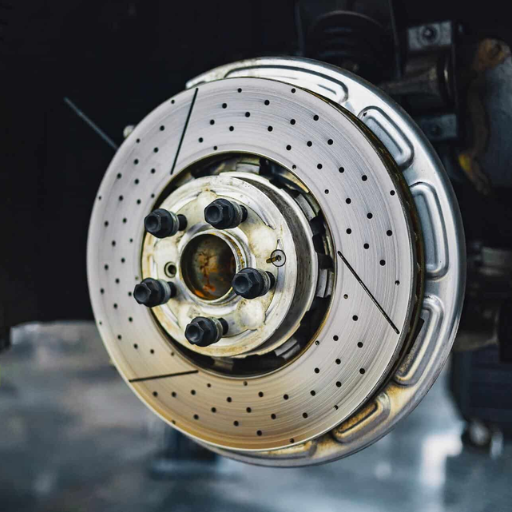
with the right mechanical tools, knowledge, and experience, replacing a rear wheel bearing can be a great way to save some money. It is an entire process that includes removing the wheel and the brake components (in some cases, the axle, too), then raising the vehicle to access the bearing and twisting it off The bearing. This field requires effort, one off-hand or wrong effort might cause damage or risk up the life of the person trying to fix it. So work on your confidence and skills well, and take your time. If you are still confused, looking for a professional might be cheaper in the long run.
Tools and skills needed for DIY wheel bearing replacement
I would say that changing a wheel bearing on your own requires a fair amount of know-how and a set of tools. Yeah, at minimum, you’ll need at least a jack and a few stands, a wrench set, a socket set, and maybe even a torque wrench. Most of the time, a bearing puller or a press is needed to take out and install the bearing in a safe manner. One more thing – it’s nice to know your way around vehicles, and for that, you should be able to remove the brake systems and axles without damaging anything. Do not meddle with this job if you are not confident, as it is not meant for first-timers. It is not a walk in the park because you need to handle it really precisely to not injure anyone or to not fail.
Pros and cons of DIY vs. professional replacement
it is safe to say that the decision to replace a wheel bearing by yourself or by a professional rests upon a few factors. A decision like that can be quite difficult, which is why I will elaborate on both possibilities in order to help you make a more informed decision.
Pros
- Cost Savings –You cut down on labor costs by performing the replacement on your own, which lessens the total cost by a substantial margin.
- Learning Opportunity – It is an opportunity for you to polish your skills while better comprehending the internal workings of the car.
- Convenience at Your Own Pace – You do not have to make an appointment but rather come to rely on the time when working on the vehicle is most convenient for that particular person.
Cons
- Specialized Tools Required – Buying tools such as a bearing puller or press or renting them can raise the initial costs.
- Skill and Experience Needed – There is a danger of breaking parts or placing people in danger without a proper brake system and axle understanding.
- Time-Consuming –This is custom for a professional, yet a nonversed person can take longer because what professionals do for a couple of hours runs for several hours.
Professional Replacement
Pros
- Expertise and Precision – The Engineer is a qualified person who is trained and competent to carry out such repairs without any mistakes.
- Access to the Right Tools – Shops have specific tools. Therefore, the work is accomplished unobjectionably.
- Warranty on Repairs – Most professional services offer a guarantee, and hence, stress is lowered.
Cons
- Higher Costs – Labor can be expensive, especially for complicated repairs.
- Scheduling Hassles – There may be some times when latitude has to be taken so as to not conflict with the shop’s availability.
- Limited Transparency – There are those who dislike the fact that they are not present during certain stages in the repair cycle of their vehicle, which makes the whole endeavor feel futile.
In the end, you’re the one who decides what makes the most sense based on all of your skills, money, and available time. So, fellow painters, if you love to do things the DIY way and have faith in your mechanical skills at least a bit & own the tools, that can be a nice experience. On the other hand, if you require a certain level of precision, safety, and effectiveness, it would be better to hire professionals in those cases.
Step-by-step guide for replacing a rear wheel bearing
In my opinion, the task of replacing a rear wheel bearing can seem a little intimidating. However, it is not as difficult as it sounds. All you need is the right set of tools and a little patience. So to make things easier, in this article, I’m going to walk you through a step-by-step program based on my past experience. This program will enable you to do the job correctly and easily:
- Gather the necessary tools.
You will require a set of hand tools which include a bearing press kit, a torque wrench, a socket set, safety glasses, gloves, and a hammer. Ensure that all tools are in hand to minimize the time wasted.
- Safety first
Ensure the braking system is engaged, prevent the wheels from rotating using wooden blocks, and level the car. Also, you must refrain from using a single jack whenever working beneath the car, rather consider using jack stands.
- Remove the wheel
Unscrew the lug nuts, Use a lifting jack to pick the car then place a few jack stands diagonally under the front of the car before using the lug wrench to remove the nuts completely. Now you have a clear view of the hub assembly after unmounting the wheel.
- Take off the brake components.
Unscrew the caliper and the rotor cover that conceals the hub. If the calipers don’t seem to permit some movement, utilize a brake piston to carefully push them back. If required, use a hook or cable to support the caliper so the brake line isn’t overextended.
- Detach the hub assembly.y
Unbolt the bolts on the pivot side of the hub assembly that lock it into place. It may also include dismounting the nut on the axle or surrounding areas to be able to reach and unlock additional locks, depending on the vehicle.
- Remove the old bearing.g
With a bearing puller or press, lift the old bearing off the hub with caution. This can be an interesting step because due to a seized or rusted bearing, one may have to hammer it a few times or push it harder in order to complete the task.
- Install the new bearing.
Bring the new bearing over the hub while correctly aligning the two, and push by means of a bearing press. The alignment determines whether the installed part works so ensure that everything is in order and bolted properly.
- Reassemble the hub and brake components.s
Attach the hub assembly onto the axle, properly fasten all bolts according to the exact torque specifications set out by the manufacturer, and put back the brake rotor and caliper.
- Reinstall the wheel
Hand-fastening the lug bolts and then placing the wheel on the hub, lower the car from the jack, and, by utilizing a torque wrench, tighten the bolt in a star pattern as evenly as possible.
- Test your work
However, there is a need to be extra careful before driving. To check if everything runs smoothly, take yourself around the block but at a slow pace as this will work towards listening for any sort of noise.
If you’re looking to carry out a rear wheel bearing replacement, this is a strategy that will help you. Understandably, clear concentration is required for this task, but the pride when it has been correctly completed is rewarding. Whenever in any doubt, check the service manual for your car for assistance directions.
What types of rear wheel bearings are available, and how do they affect cost?
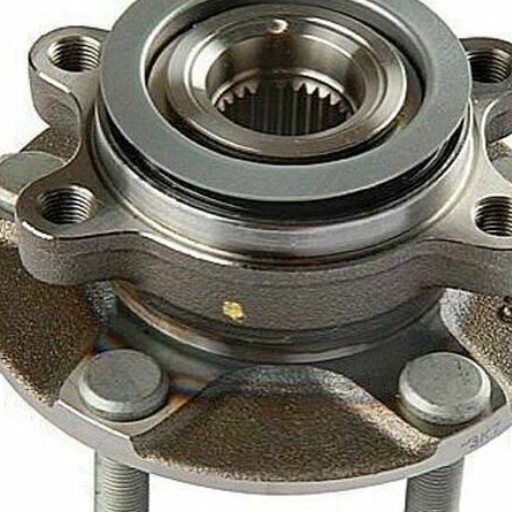
After carrying out a basic study on car mechanics, I became curious about the range of rear wheel bearings available. At a casual glance, during the basic study, I gathered that car wheel bearings could be – ball bearings, roller bearings, and tapered roller bearings. Knowing that ball bearings are the most common, thanks to their versatility and cheapness, it’s no surprise they are used in a majority of standard passenger vehicles. It, however, seems that roller bearings are designed for tougher vehicles as they are pricier than ball bearings and are capable of handling more weight and load. Now, Tapered roller bearings are another league altogether when compared to the other two types as they bear larger axial and radial forces and specialize in load bearing, which is why they are made to be used in heavy-duty vehicles, but as expected, they come for a price. At the end of the day, the type of bearing that will be suitable for your vehicle will ultimately determine the cost Estimation, as the more upmarket bearings do tend to have a higher cost.
Different types of wheel bearings: ball bearings vs. roller bearings
choosing between ball bearings and roller bearings largely depends on the needs of the parts of the vehicle. This is due to the fact that ball bearings are quite adaptable and operate in a wide range of applications, as they can sustain rotating radial loads as well as thrust loads. On the contrary, roller bearings are superior with regard to endurance and load-bearing capacity, which is the reason why they are best utilized in vehicles that are heavily loaded or exposed to extreme conditions. All bearings serve a purpose, so understanding the needs of your outfit will allow you to make an educated choice.
Hub assembly vs. individual bearing replacement
Substituting the center part of the wheel bearing, which is called hub assembly, is often quicker as it is simpler. Hub bearing sets are very common in most cars; they can be built into the wheel hub, and there is a high probability that the wheel bearing center is the only damage done to the vehicle. Replacing the entire hub assembly is the most efficient option since it improves effectiveness and quality while also decreasing total operational expenses. However, if your car allows fitting and damage only applies to the bearing, this can be an efficient alternative. Always consider your car manufacturer’s recommendations and the longevity of repair in mind.
OEM vs. aftermarket wheel bearings: price and quality comparison
In my opinion, the central question boils down to cost vs quality, especially when choosing between OEM wheel bearings and aftermarket wheel bearings. At an OEM level, the bearings are made for the particular vehicle, hence the factory match. Although the rebuild involves an OEM part, it increases the cost, and at least the reliability is ensured. If, on the other hand, one cannot obtain OEM parts, he or she can opt for aftermarket parts, which are cheaper as some recognized brands can match such products. Since the aftermarket is quite broad, it is important to ensure that the selected brand does not compromise on quality or safety. In most situations, except when you have aftermarket options that are competent, I would always recommend OEM bearings for wheel coupling assemblies when precision is not compromised and all the wheel components function effectively.
How long does a replacement for a rear wheel bearing take?
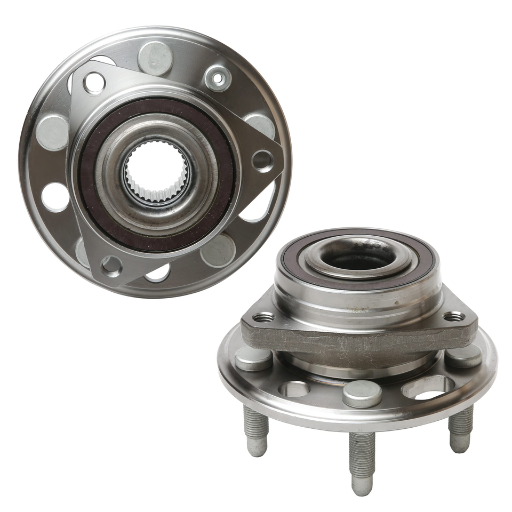
In general, the replacement of one rear wheel bearing takes 1.5 to 2 hours, depending on the vehicle’s make and model. However, problems like rust, placement of the bearing, or the need for special equipment can expand this period a bit.
Average time for professional rear wheel bearing replacement
the average time a professional takes to change a rear wheel bearing is anywhere from 1.5 to 2 hours. This is, of course, assuming that the vehicle is in good shape and has no unforeseen issues. That said, difficulties such as rusted components or restricted vicinity to the bearing’s structures may on occasion lengthen the operation. With the right equipment and know-how, the work is usually quite basic and done quickly.
Factors that can extend the replacement time
The breakdown of such bearing components can also add to the reinstallation time since there can be rusted or seized items that have to be relieved first before the removal of the bearing assembly; there are also some car models in which the assembly is difficult to reach. Furthermore, underlying problems like having non-matching parts or certain other components that have been damaged will also take up time in the overall repair. But if the work is properly planned and the right tools are made available, these are delays that can be avoided.
Are there any additional services I should consider with a wheel bearing replacement?
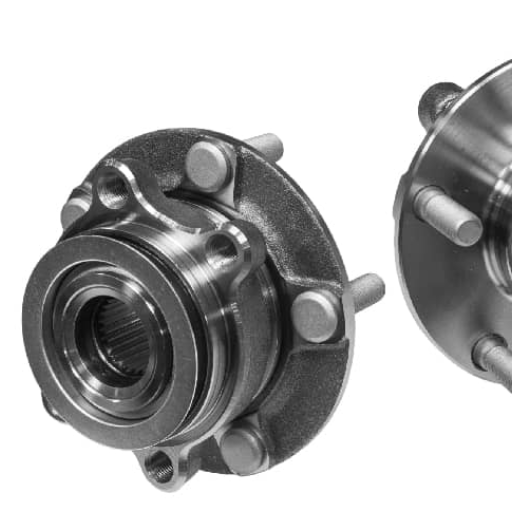
Wheel alignment after bearing replacement
Ya, a wrench or ratchet is mid this, and several stakes that go within a wheel bearing, so ya alignment for bearing replacement is recommended but not strictly necessary. I say so because bearing replacement piracy may modify some of the suspension or angles of alignment. Ya, a looser or stronger steer will come in place to do the alignment and steer the vehicle safely. Even if not required by law or to comply with some strict guideline, one would get the alignment off the earlier. Ask your technician whether the alignment is needed or not. It clearly depends on a few things.
Inspecting and replacing related components
crucial attention must be paid to related parts when carrying out a wheel bearing replacement. I always emphasize that such components as the wheel hub, axle, and suspension elements should be checked as well. After all, such areas may be stressed or worn out because of a defective bearing, and the regions could be problematic if they are unattended. The wheel bearing replacement could turn out to be the first and the last repair during the vehicle’s life cycle if all the potential failures are dealt with at once. In case I observe serious deterioration or damage, I would recommend replacing those parts as soon as possible for optimal functioning and security.
Importance of proper torque and break-in procedures
Replacement and break-in procedures are necessary to ensure proper wheel bearing replacement. Conservatively speaking, it is of utmost significance that the wheel bearing is torqued to the above-stated numbers. Loosening the assembly results in slippage, which leads to wear/damage, or tightening it too much can warp the part(s), causing it to fail. There are various ways one would say break-in, such as turning slowly or cutting jackknifes, which promote the bearing to sit after the installation. Doing these steps also guarantees safe usage which enhances the longevity of the repair. In many cases, it is these very procedures that are overlooked, but they allow one to save rather a lot.
How can I extend the life of my new rear wheel bearing?
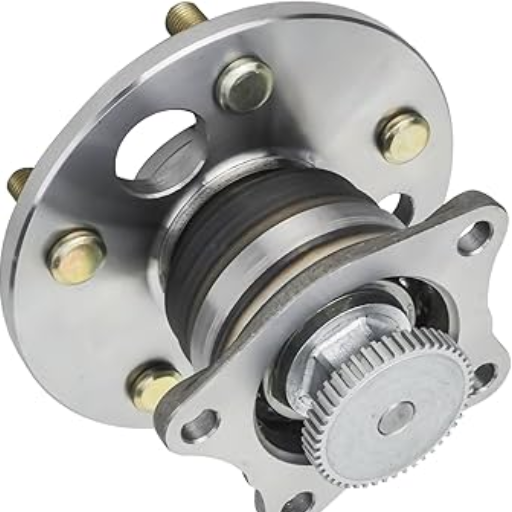
To further enhance the lifespan of your rear wheel bearing, follow both recommended practices and appropriate driving behaviors. Dew on a regular basis check for signs of deterioration to other components of the assembly and vibration while the assembly is in rotation, and maintain the bearing clean and free of dirt and water. Never have your automobile overloaded, for load does increase the stress on the bearings. Moreover, even the surrounding components, such as the axle and hub, which are critical to bearing efficiency, must be checked for condition and proper alignment. It is not difficult to adhere to these stipulations, given that you report defects and indispositions soon enough for them to be remedied and dealt with during the maintenance overhaul.
Proper maintenance tips for wheel bearings
there are only some important practices one can follow while working on the wheel bearings. First, always apply grease, which is approved by the manufacturer, so that the bearings operate smoothly without any premature wear because of friction. Second, always take care of the load on the vehicle because too much load will stress the bearings more than they should. Inspection is vital; I always advise clients to troubleshoot by listening for distinctive noises or vibrations that can warn them about a developing concern. Last but not least, cleaning and maintaining the surroundings of the bearings to prevent penetration of dirt or moisture is very important. I personally have recommended these steps to many of my clients and to my amazement, I found them to be effective at eliminating expensive repairs while ensuring the vehicle functions well for many years.
Driving habits that can affect bearing lifespan
I’ve been in my industry long enough to observe how much driving habits influence the lifespan of wheel-bearing units. For instance, accelerating rearward and frequent braking places strain on the wheel bearings, resulting in premature wearout. The same could be said about the practice of making sharp turns while driving at high speeds, as it increases the forces acting on the wheels and wheel bearings. Flushing your vehicle with a high-pressure washer or driving in deep water or mud on a regular basis is also something I would not recommend since moisture and contaminants can bypass the seals of the bearings. If these habits are kept in mind and one drives in a smooth manner, it will significantly help in maintaining the integrity and long life of the wheel bearings.
When to schedule regular inspections for wheel bearings
in the professional practices of different specialists, the recommended schedule for the checking of wheel bearings is once every 30,000 to 40,000 miles or together with other maintenance activities such as tire rotations or brake checks. In the case of abnormal situations engulfing the bearing, such as humming, grating, or vibrations when the vehicle is in motion, it is crucial to undergo an inspection at once. Problems which can be caught early enough are likely to be minor and are unlikely to affect the performance of the vehicle thus making it easier and cheaper to correct them. Thus, an examination of this sort is also necessary in as far as preservation of the bearing and the entire vehicle is concerned.
Reference
- Kelley Blue Book: Provides national average costs and insights into how luxury brands might affect pricing.
- RepairPal: Offers detailed cost estimates, including labor and parts breakdowns.
- J.D. Power: Discusses average costs for replacing wheel bearings and provides a comprehensive guide.
Frequently Asked Questions
Q: How much does it cost to replace a wheel bearing?
A: The average cost to replace a wheel bearing typically ranges from $200 to $800 per wheel. This cost can vary depending on factors such as the make and model of your vehicle, labor rates in your area, and whether you’re replacing a front or rear wheel bearing. Keep in mind that the cost of a wheel bearing replacement includes both parts and labor.
Q: What are the signs that I need a wheel bearing replaced?
A: Common signs that you need a wheel bearing replaced include unusual noises like grinding, humming, or rumbling coming from the wheel area, vibrations in the steering wheel or floorboard, and uneven tire wear. You may also notice wheel play or looseness when jacking up the vehicle. If you experience any of these symptoms, it’s important to have your wheel bearings inspected by a professional.
Q: Is the cost of replacing wheel bearings different for front and rear wheels?
A: Yes, the cost of replacing wheel bearings can differ between front and rear wheels. Front-wheel bearing replacements are often more expensive due to their more complex design and the additional labor required. Rear wheel bearings are typically simpler and may cost less to replace. However, the exact cost difference depends on your specific vehicle’s make and model.
Q: How long do wheel bearings typically last before they need to be replaced?
A: Wheel bearings are designed to last for a considerable time, often between 85,000 to 100,000 miles. However, this can vary depending on driving conditions, vehicle maintenance, and the quality of the bearings. Some vehicles may need wheel bearing replacement earlier, while others may last well beyond 100,000 miles.
Q: Can I replace a wheel bearing myself to save on costs?
A: While it’s possible to replace a wheel bearing yourself, it’s generally not recommended unless you have significant automotive experience and the proper tools. The process can be complex, especially for front wheel bearings or hub bearings. Improper installation can lead to serious safety issues. For most people, the cost of professional installation is worth the peace of mind and guaranteed results.
Q: Are there any ways to reduce the cost of wheel bearing replacement?
A: To potentially reduce the cost of wheel bearing replacement, you can shop around for quotes from different mechanics, consider using aftermarket parts instead of OEM (Original Equipment Manufacturer) parts, or look for service specials at local auto shops. However, be cautious about choosing the cheapest option, as quality is crucial for safety. Some shops may offer warranties on their work, which can provide added value.
Q: How long does a wheel bearing replacement typically take?
A: The time required to replace a wheel bearing can vary, but it typically takes between 1 to 3 hours per wheel. This timeframe can be influenced by factors such as the vehicle’s make and model, whether it’s a front or rear bearing, and the mechanic’s experience. Some complex replacements, especially those involving the entire wheel hub assembly, may take longer.
Q: Is it necessary to replace both wheel bearings on the same axle at the same time?
A: While it’s not always necessary to replace both wheel bearings on the same axle simultaneously, many mechanics recommend doing so, especially if the vehicle has high mileage. This is because if one bearing has worn out, the other is likely not far behind. Replacing both can save you money in the long run by avoiding a second repair visit and labor costs. However, if only one bearing is worn or damaged, replacing just that one is acceptable.
